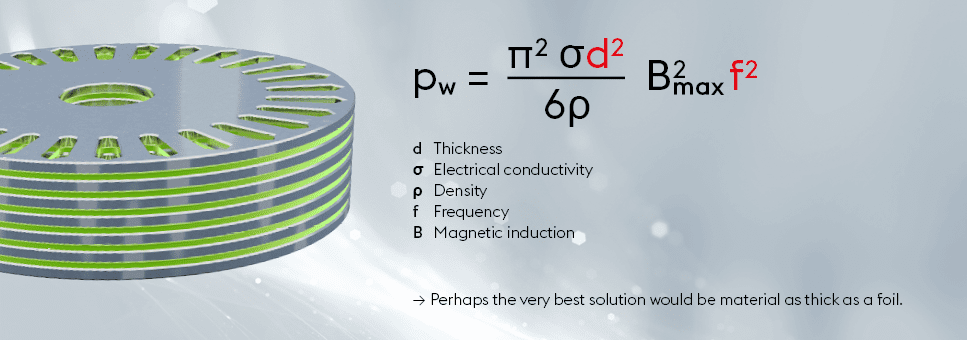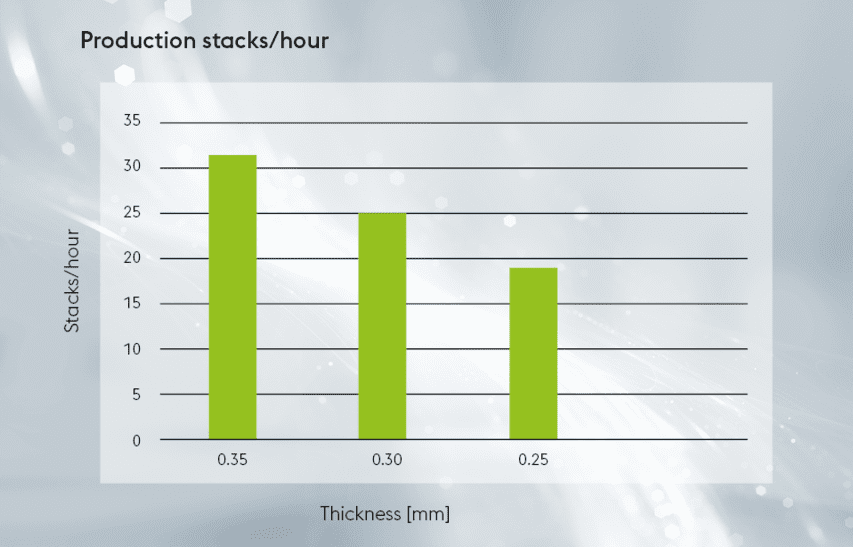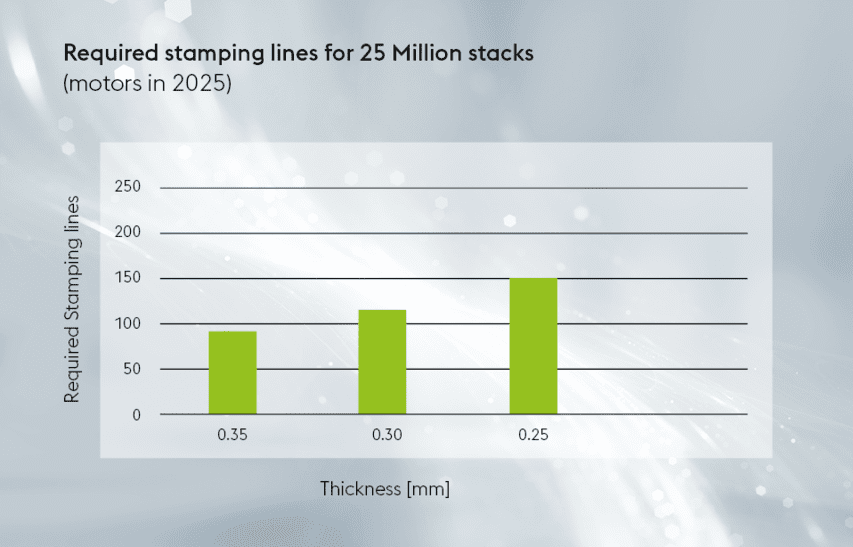Tags:
Of course the magnetic and mechanical properties of the material are among the more decisive ones. The thinner the material is, the lower will be the eddy-current losses at high frequencies. This increases the efficiency of the motor. This in turn means lower electricity consumption and thus higher distance ranges at the same level of battery capacity.

Yet what kind of effect does the thickness of electrical steel have on factors such as stampability, available stamping capacities, required stamping technologies, availability on the market and finally on the price of the material? Are there any other technological factors for motor design, in addition to efficiency, that speak for different thicknesses? Should the motor serve merely as a support for the combustion engine (mild hybrid) or should it independently drive the car up to a certain speed and cover shorter distances using electric power (plug-in hybrid) alone? Or should the electric motor take the car across far distances all by itself (electric vehicle)?

Let us take as an example a motor with an outer stator diameter of 250 mm and a stack height of 120 mm. The thinner the sheet thickness, the more laminations will be required to achieve the required overall height. The stamping speed varies between 220 strokes/min (for 0.25 mm thick sheet) and 250 strokes/min (for 0.35 mm) depending on the sheet thickness. Taking into account rejects, downtimes and availability of the system, the production volume would be between 32 stacks (0.35 mm) and 19 stacks per hour (0.25 mm), meaning that the stamping time increases by more than 1.7 times.

Under the (very conservative) estimated assumption of 25 million drive motors required in 2025, this means an installation of at least 60 additional high-precision stamping lines/presses for a single switch from 0.35 mm to 0.25 mm in thickness.
Strong and powerful electric motors can be produced with a large number of strips of electrical steel. When selecting the drive motor for purely electric operation, the primary question is how high the overall savings would be by using higher-quality, thinner and thus more expensive electrical steel. Even relatively small differences in efficiency can influence the range and thus the required (very expensive) battery capacity.
If the electric motor is only to support the combustion engine as in a mild hybrid car, or the vehicle is intended to operate purely electrically over short or medium distances as in a hybrid or plug-in hybrid, the demand on the performance profile is lower. In addition to material savings in the engine, the required battery capacity is significantly lower. This is why it makes sense to reduce the efficiency of the motor by using thicknesses in the range of 0.3 and 0.35 mm. In addition, it must be taken into account that very thin electrical steel leads to an increase in efficiency in high-speed motors, especially in the stator. In the rotor, however, very often less thickness is required than, most of all very high strengths. Special joining processes such as full-surface bonding enable rotor designs that also have a positive effect on efficiency.
Thinner isn't always better. When taking a holistic view of processability, costs, area of application, efficiency and other technical factors for the design of the motor, the use of electrical steel must be considered in a very differentiated way. Many conditions speak clearly in favor of using electrical steel in various strengths.
Our technical specialists will be happy to help in the decision-making process when it comes to selecting materials and processes.